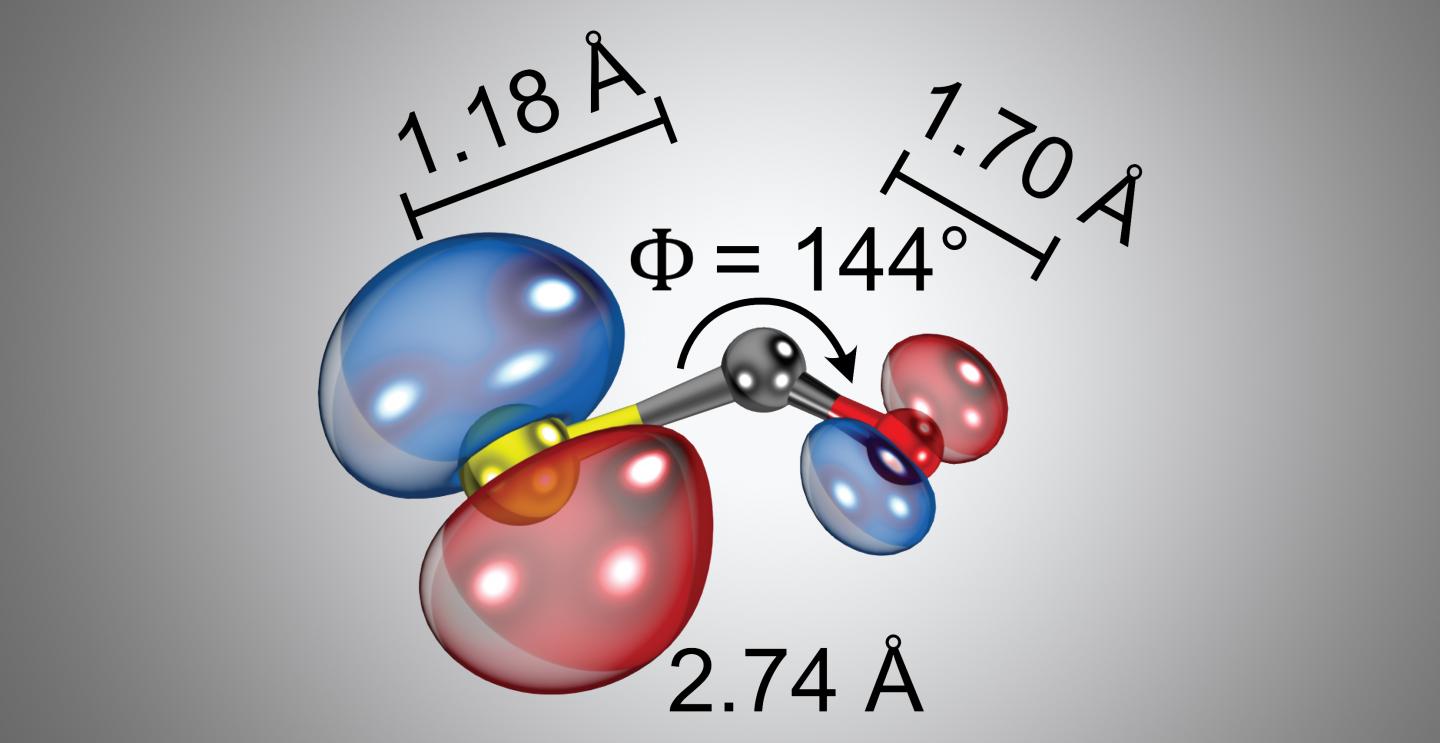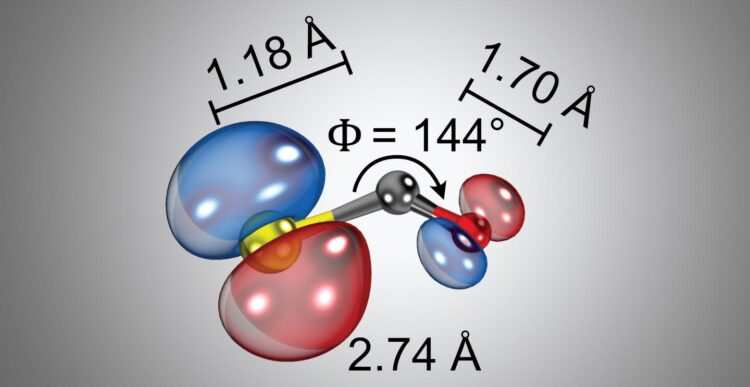
Credit: ©ICFO
Light microscopes have revolutionized our understanding of the microcosmos, but their resolution is limited to about 100 nanometers. To see how molecules bond, break, or change their structure, we need at least 1000 times better resolution.
Laser induced electron diffraction (LIED) is a technique which allows to pinpoint the individual atoms inside a single molecule, and to see where each atom moves when the molecule undergoes a reaction. This technique proved to be an amazing tool for the imaging molecules, such as water, carbonyl sulfide or carbon disulfide. However, using a strong laser field to generate the electron diffraction presented challenges in retrieving the exact structure, since the structural resolution depended on exact knowledge of the laser field itself.
In a study recently published in Nature Communications, ICFO researchers Aurelien Sanchez, Kasra Amini, Tobias Steinle, Xinyao Liu, led by ICREA Prof. at ICFO Jens Biegert, in collaboration with researchers from Kansas State University, Max-Planck-Institut für Kernphysik, Physikalisch-Technische Bundesanstalt, and Friedrich-Schiller-Universität Jena, have reported on an alternative and novel approach that retrieves accurate and precise information about the atomic structure without exact knowledge over the laser field. They successfully applied the method to imaging gas-phased molecule Carbonyl Sulfide (OCS), in particular on the bond lengths between the constituent atoms, showing a significant bent and asymmetrically stretched configuration of the ionized OCS+ structure.
Determining the atomic bonds of Carbonyl Sulfide
In their experiment, the scientists took a gas mixture of 1% OCS in helium and expanded it supersonically to create a molecular beam of the gas with a temperature below 90K. They then took a 3.2?m laser and exposed the molecule to the strong laser field. The interaction between the laser and the molecule produced an accelerated electron, which was released from the molecule, accelerated into the laser field and returned back to the target ion by the electric field of the laser; the re-collision of the electron with the ion structure generated a molecular imprint of the structure and, by extracting this information from the electron interference pattern and the scattering angle analysis, the scientists were capable of determining the proper structure of the molecule.
Novelty of the approach
Named ZCP-LIED, the novelty of this approach resides in the fact that the scientists came up with a very clever way to retrieve the atomic information by using the full 2D electron scattering information, mainly the energy and scattering angle spectra of the electron in the laboratory frame instead of the laser frame, which drastically improved the statistics of the results. Alongside to using 2D data instead of 1D information, they also identified a distinctive feature in spectra related to what they called the zero crossing point (ZCP) positions (where the interference signal showed a null value). By carrying out the analysis over these critical points, the scientists were able to obtain from a much smaller data set more precise information on the bond lengths of the atoms that make up the molecule, reducing quite considerably the calculation time.
For validation of their approach, they used various methods, compared them to quantum chemistry theoretical simulations and prove that their ZCP-LIED technique could obtain inter-nuclear distances with a much higher precision, could measure bond distances of similar length (something rather impossible to do with previous methods), that it avoided converting frames of reference, and was able to determine the molecular structure in environments where the background noise could be considerable. Taking all this into account, they reported obtaining the molecular information of 10-atom molecules, and in particular, for the carbonyl sulfide, where they saw that the molecule OCS+ had a significantly bent and asymmetrically stretched structure, different to what previous studies had determined for this molecule.
The results obtained by this study have demonstrated that the ZCP-LIED technique could be a very powerful tool to determine the molecular structure of large and more complex molecules. It could also be extended to ultrafast electron diffraction (UED) and even ultrafast X-ray diffraction (UXD) to track the geometric structure molecules in a transient phase.
###
Reference: Molecular structure retrieval directly from laboratory-frame photoelectron spectra in laser-induced electron diffraction, A. Sanchez, K. Amini, S.-J. Wang, T. Steinle, B. Belsa, J. Danek, A.T. Le, X. Liu, R. Moshammer, T. Pfeifer, M. Richter, J. Ullrich, S. Gräfe, C.D. Lin, J. Biegert, Nature Communications, 10.1038/s41467-021-21855-4.
Media Contact
Alina Hirschmann
[email protected]
Related Journal Article
http://dx.





